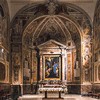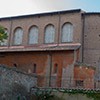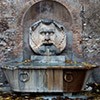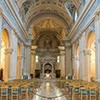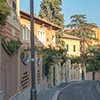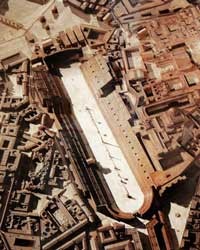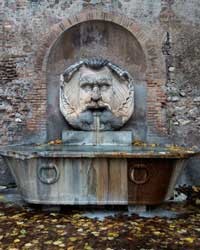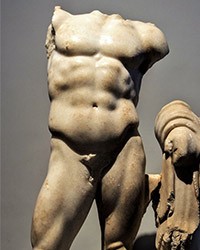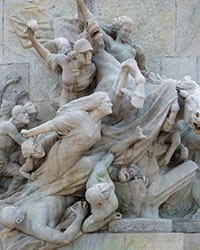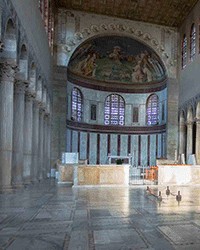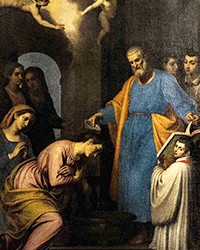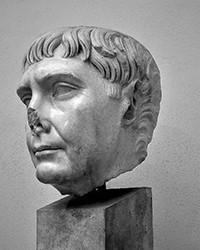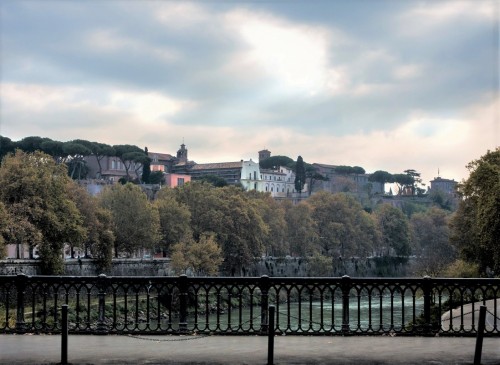
View of Aventine Hill from a bridge on the Tiber River
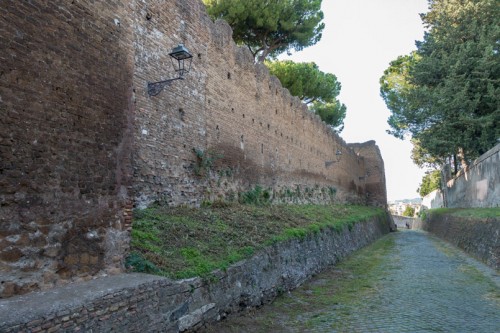
Clivio di Rocca Savella, road leading to the top of Aventine Hill
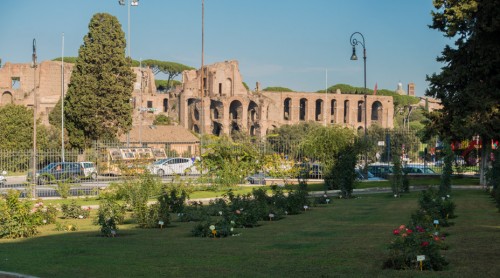
Aventine Hill, Rose Garden (Roseto di Roma Capitale), Palatine Hill in the background
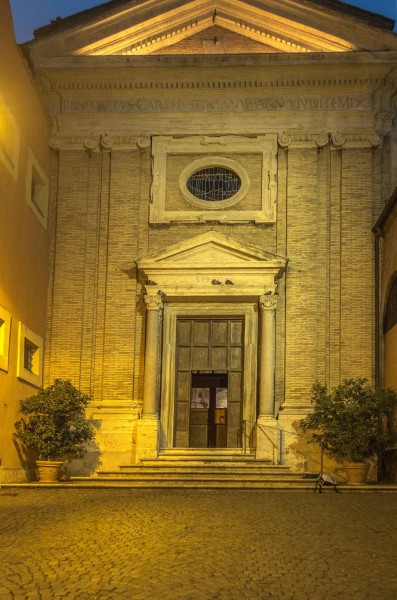
Aventine Hill, façade of the Church of Santa Prisca

Aventine Hill, view of the apse and the main altar - Church of Santa Prisca
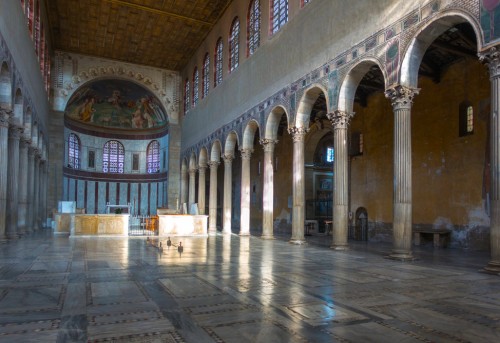
Aventine Hill, Interior of the Basilica of Santa Sabina
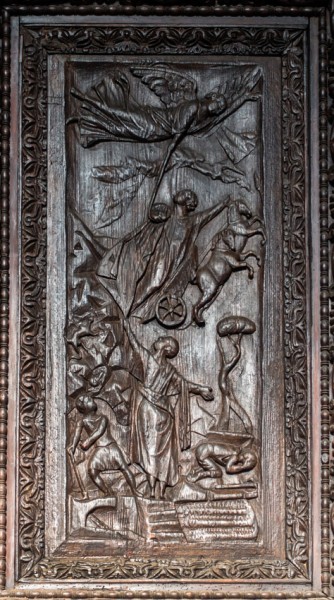
Aventine Hill, Cypress door from the V century of the Basilica of Santa Sabina

Aventine Hill, Giardino degli Aranci with a view of the dome of the Basilica of San Pietro in Vaticano
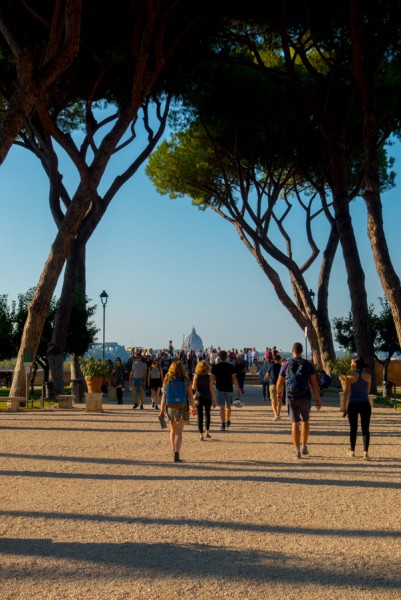
Aventine Hill, Giardino degli Aranci with a view of the dome of the Basilica of San Pietro in Vaticano
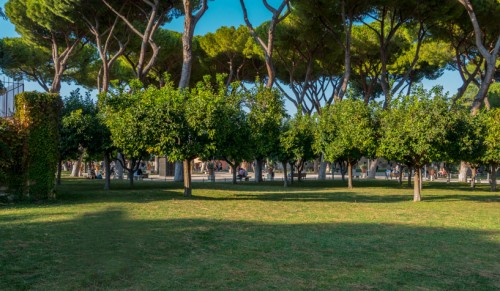
Aventine Hill, Orange Garden (Giardino degli Aranci) near the Basilica of Santa Sabina

Aventine Hill, Fontana del Mascherone di Santa Sabina, Piazza Pietro d'Illiria
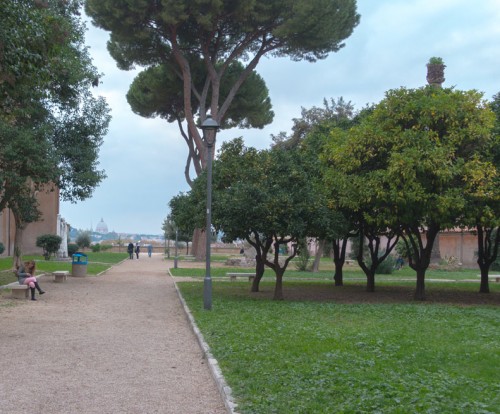
Aventine Hill, Giardino di Sant’Alessio near the basilica of Santi Bonifacio e Alessio

Aventine Hill, interior of the Basilica of Santi Bonifacio e Alessio
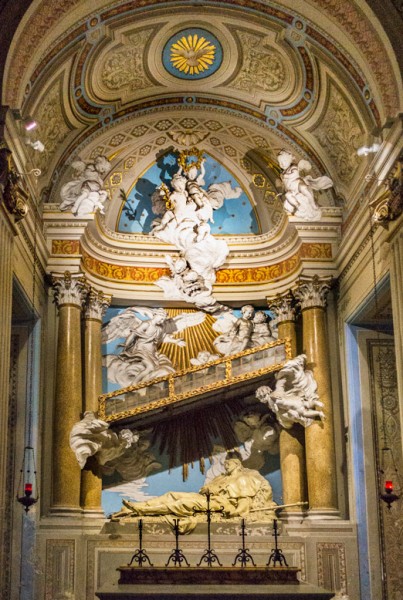
Aventine Hill, altar dedicated to St. Alexis in the Church of Santi Bonifacio e Alessio
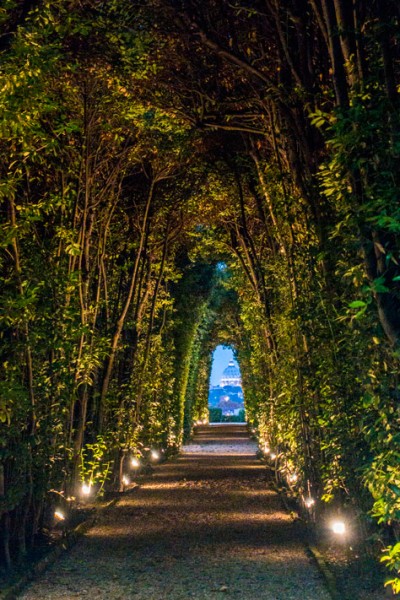
The dome of the Basilica of San Pietro in Vaticano seen through the keyhole, the gate of the Villa del Priorato di Malta, belonging to the Order of the Knights of Malta
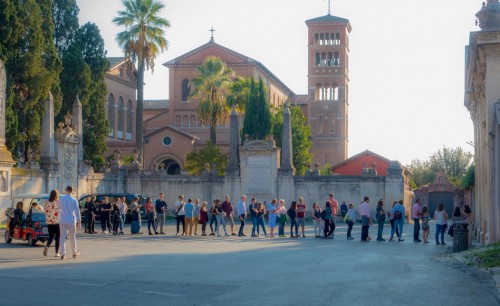
Aventine Hill, Knights of Malta Square (Piazza dei Cavalieri di Malta), Benedictine Church of Sant’Anselmo in the background
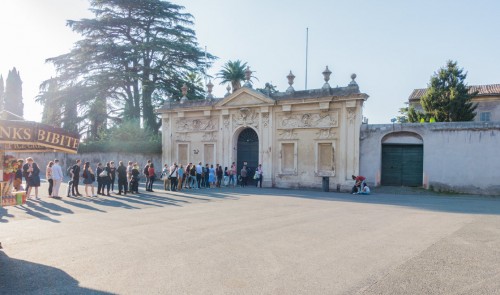
Aventine Hill, gate leading to the area belonging to the Sovereign Military Order of Malta
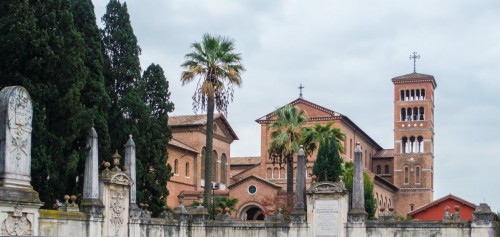
Aventine Hill, view from the Knights of Malta Square onto the buildings of the monastery and Church of Sant’Anselmo
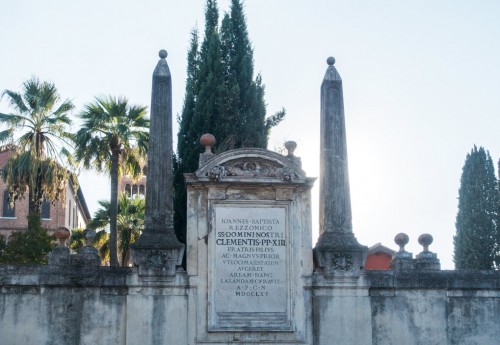
Aventine Hill, decorations of the Malta Square
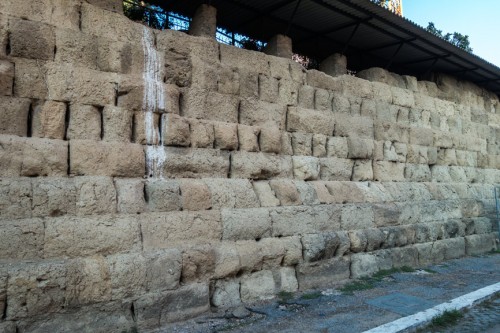
Aventine Hill, the Wall of Severine at the foot of the Aventine Hill
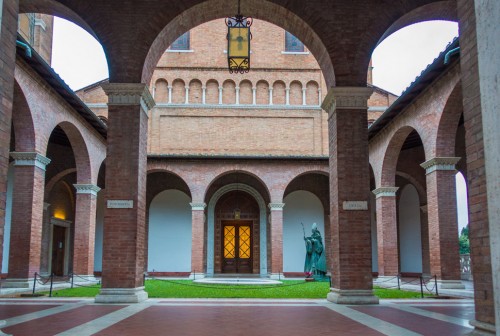
Aventine Hill, courtyard in front of the façade of the Church of Sant’Anselmo
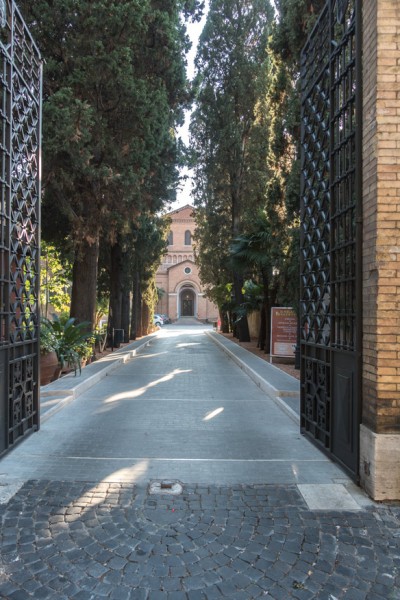
Aventine Hill, entrance to the Church of Sant'Anselmo complex
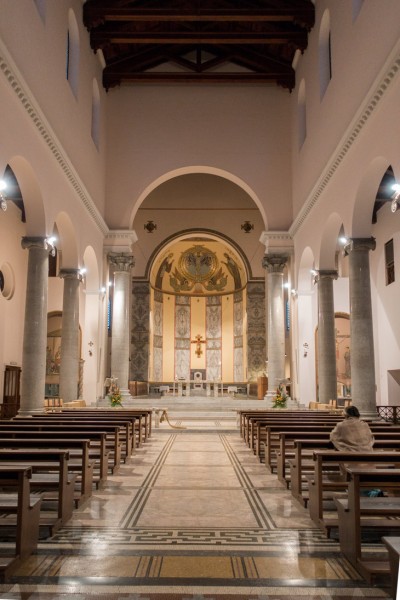
Aventine Hill, interior of the Church of Sant'Anselmo

One of the alleys on Aventine Hill
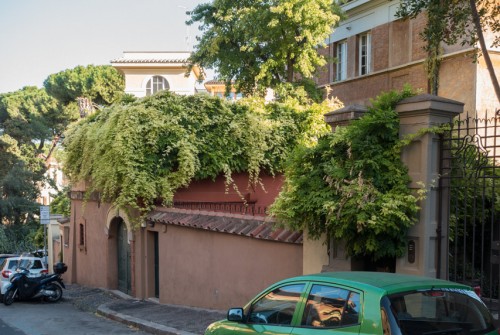
One of the alleys on Aventine Hill
This, one of the seven famous Roman hills can be visited at various times of the day, but perhaps the most pleasant time is the evening, when the warm glow of the street lamps makes it seems fairy-tale-like. Wandering through the winding streets, passing the high, covered with greenery and flowers walls, behind which magnificent villas, stand, we can take in the beauty of this area, far-removed from the hustle and bustle of Rome, cars, tourists, shops, and restaurants. Simply put, these are not here. It is difficult to believe, but this place, today inhabited by the most famous and influential Italians, at its inception was looked upon disfavorably by the gods.
This, one of the seven famous Roman hills can be visited at various times of the day, but perhaps the most pleasant time is the evening, when the warm glow of the street lamps makes it seems fairy-tale-like. Wandering through the winding streets, passing the high, covered with greenery and flowers walls, behind which magnificent villas, stand, we can take in the beauty of this area, far-removed from the hustle and bustle of Rome, cars, tourists, shops, and restaurants. Simply put, these are not here. It is difficult to believe, but this place, today inhabited by the most famous and influential Italians, at its inception was looked upon disfavorably by the gods.
In Roman mythology, a fire-breathing giant Cacus, who would devour the city’s inhabitants, lived at its foot, before finally being killed by Hercules. Then the hill was the stage of the rivalry between two brothers, Romulus and Remus, struggling with each other for the right to establish a city and rule it. The legendary Remus chose Aventine Hill as his residence, however, the gods did not support him – as we know- he died at the hands of his brother. In times of the Republic the hill was a suburb, where plebeians and small craftsmen lived in decrepit insulae (tenement houses), along with dangerous criminals, fighting in their clans for spheres of influence in the city. For centuries Aventine was outside of the Roman jurisdiction and it was not until 49 A.D., that it was officially made part of the city. In order to “revitalize” this part of Rome, Emperor Octavius Augustus ordered temples to be constructed on the hill. It is here that Cicero reportedly had several houses which he rented out, supplementing his income as a stonemason. In the next few decades however, wealthy and influential Roman aristocrats began settling on the hill with a view of the Tiber, building their broad villas here. It is here that Trajan lived, prior to becoming emperor, and it is here as well, that Emperor Decius founded baths, in the middle of the III century. Christianity brought with it the fortified houses of families struggling for influence in the city, as well as significant churches and monasteries.

Today, Aventine Hill, peaceful, elegant and picturesque is perhaps one of the most beautiful places in the city. The hill can be accessed from various sides. For instance, passing the Church of Santa Maria in Cosmedin and climbing up the picturesque way between the walls of Clivio di Rocca Savella (or Clivio dei Publicii).
Another way (via di Valle Murcia) leads from the Circus Maximus, next to the Statue of Mazzini, through the Rose Garden (Roseto di Roma Capitale), established in 1931 on the spot of the former Jewish cemetery. In it we can reportedly see over 1100 species of roses from all over the world, the most original and nowhere else seen, those that change their color every day, smell exquisite and even….stink.
The third way leads to the so-called Small Aventine and this is the one we are going to follow. During the climb through the via di Santa Prisca the first structure which we will encounter is the modest, removed from the street Church of Santa Prisca, dedicated to a saint (Prisca) with an amazing biography. This is a special place – it is here, near the church, that at the beginning of our era one of the oldest titulae was located – a place of Christian meetings, where they would celebrate in secret. This was a function generally fulfilled by private houses, which possessed no object of cult. Christians made up the church simply by their presence. Charitable and catechism activities were also conducted in the titulae. In the one here – according to Christian tradition – St. Paul, hosted by St. Prisca and her husband Aquila, preached, rested and spoke with a group of the faithful. We can imagine him, as he climbs Aventine Hill in leather sandals to visit his hosts. Today the church shows itself in a Mannerist style, and only in the underground will we find traces of the previous building as well as the mysterious location of the meetings of followers of Mithra. A bit further, at the base of the hill, in the V century, St. Jerome met a group of his wealthy, religious admirers; it is from them that he heard about the barbarian Visigoths, robbing the residences there during their invasion of Rome under the leadership of Alaric in 410. Moving on further, we will come to via di Santa Sabina, which leads us to a Dominican church and monastery. It is here that St. Dominic created the foundation of the future power of the order, while St. Thomas Aquinas also taught here and meditated during walks in the monastery. In face of all those facts, it should come as no surprise, that this place stimulates the imagination and leads to thoughtful contemplation, especially in the beautiful early-Christian basilica of Santa Sabina. Its ceiling is supported by ancient fluting columns with refined Corinthian capitols, while the broad apse filled with windows, opens up onto the whole width of the main nave. This is a bright, clear and simple church reflecting – it would seem – the faith of the people, who constructed it. A visit to this place, would not be complete without seeing the cypress door from the V century, one of the few items of this type that is well preserved.

After leaving the church, we may linger a few moments in the orange orchard (Giardino degli Aranci), neighboring the church, and enjoy the beautiful view of Rome from its terraces. The nightly glow of the city, the winding Tiber at the foot, the illuminated dome of St. Peter’s Basilica, while in the distance the body of the Church of Santa Cecilia, well visible, and the dominating over the city – striking with its enormity – Altar of the Fatherland, all of these look splendid. It is no wonder that this location draws those who seek romance, but especially those who are in love, whose flames cannot be extinguished even by the cool gusts of the March wind. The broad apse of the Basilica of Santa Sabina visible from here, towers over everything around, while the lights in the windows of the monastery remind us that, the same Dominicans have lived here for centuries looking on at the Tiber and quietly contemplating the hustle and bustle of the city. Leaving this charming spot, we can stop for a while in front of a fountain situated by the wall (Fontana del Mascherone di Santa Sabina). Its main element is an ancient mascaron with bushy eyebrows, bulging nose, sunken eye sockets, and an enormous face, out of which a stream of water slowly flows into the marble bowl-sarcophagus. Following the via di Santa Sabina, we once again find ourselves in a small park (Giardino di Sant’Alessio), which is readily visited by children from a nearby school in the afternoon period. Once again a wonderful view of Rome stretches from its terrace. If the silhouette of the beautiful medieval campanila (bell tower), encourages us to visit the nearby Basilica of Santi Bonifacio e Allesio, we cannot count on finding great works of art inside, however the church is worth seeing for two reasons. The first is a sculpting group from the end of the XVIII century dedicated to the colorful figure of St. Alexis, lying under the stairs (definitely worth seeing). The second reason is of scenic nature – if the door on the right side of the apse leading onto the small terrace is open, we will once again find ourselves in a place with a spellbinding view of the city.

Moving on further, we will reach the Knights of Malta Square (Piazza dei Cavalieri di Malta), whose conception and decorations were created by the famous chalcographer, a creator of the unforgettable Roman vedute, who here turned into an architect – Giovanni Battista Piranesi.
People lining up on the square should not surprise us. They are moving towards a gate and each of them bends down for a few moments to look through what probably is the most famous tourist attraction of the Aventine – a keyhole, through which we get an unforgettable view – the dome of the Basilica of San Pietro in Vaticano surrounded by a row of hedges. Behind an enormous wall there is an inaccessible for tourists (however organized trips are possible) area belonging to the Sovereign Military Order of Malta, with the towering Church of Santa Maria del Prato.
Leaving the square, we can take a peek inside the picturesque Benedictine complex. An avenue will lead us to the silence-filled viridary of the Church of Sant’Anselmo all’Aventino (St. Anselm), which is only interrupted by the delicate flow of water coming from the fountain situated there. Despite the fact that this arrangement looks like an excellently preserved relic of the Middle Ages, it was not created until the end of the XIX century and is one of the most imposing Neo-Roman structures found in Rome.
Here we can descend from the hill, going down (along via di Sant’Anselmo) but we can also turn left, and following via Melania, reach the small Piazza del Tempo di Diana, a square whose name betrays the fact, that in the past the Temple of Diana was located here; the house of the future Emperor Trajan also stood here, along with the aforementioned Baths of Decius, designated solely for aristocrats residing on Aventine Hill. In the present no traces of these building remain, at least on the outside. The impressive Casale Torlonia house fills this square, inhabited by the last representatives of the famous Torlonia family.

If however, we do decide to go straight down, along the via di Sant’Anselmo, at the end of this street we are in for quite a treat. There is a well-preserved fragment of the oldest city walls (Severian) in Rome, whose creation dates back to the time of King Servius Tullius, meaning middle of the VI century B.C. The preserved fragments, which are the remains of the then gate (Porta Raudusculana), are however, about two centuries younger, however still a mere touch can transport us thousands of years into the past if we just use our imagination a bit.
Upon reaching the tram tracks, we can decide to cross them and thus find ourselves on the so-called Small Aventine Hill, which although not being as picturesque as Aventine proper, still deserves our attention.






























